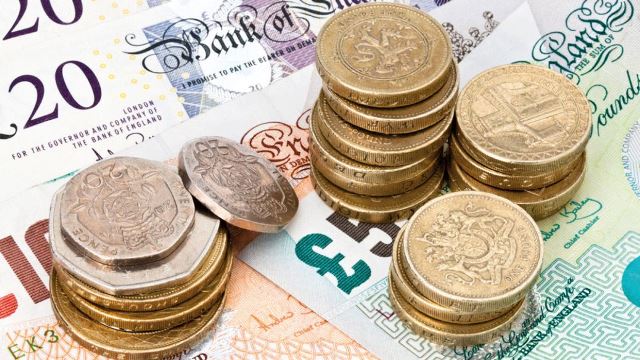Sterling tumbled towards $1.21 and tanked to a 2-1/2-year low against the yen on Tuesday as growing concerns about chances of a disorderly Brexit led investors to hedge or cut their exposure to British assets.
The pound, its fortunes tied to the years-long process of negotiating Britain’s exit from the European Union, is suffering from signals of panic among investors that the UK is headed for a no-deal Brexit under new Prime Minister Boris Johnson.
Financial markets had regarded that eventuality, which many economists believe would severely damage the British economy, as relatively unlikely.
The British currency has shed around 2.4% of its value since Johnson took over last week and is headed for its worst monthly performance since October 2016, not long after the country voted to leave the EU. Sterling traded as high as $1.32 in May.
“The tail risk of either a general election or no-deal Brexit were seen as a lower probability earlier but are increasingly getting priced in as a base case scenario,” said Supriya Menon, a strategist at Pictet Asset management.
There seemed to be less room for compromise between London and Brussels, she added.
This week’s selloff shows little sign of abating, with options markets implying more pain in store.
A gauge of expected swings in the price of the pound before the Oct. 31 Brexit deadline has jumped to the highest since before March 29, the original date for Britain to leave.
Sterling selling has accelerated since Johnson – whose cabinet is packed with Brexit supporters – took over with the explicit agenda of taking Britain out of the EU by the end of October, whether transitional trading agreements are in place or not.
Simon Derrick, chief currency strategist at BNY Mellon, said the no-deal Brexit shift had caught the market by surprise. “There’s plenty of space for sterling to suffer because when sterling moves it tends to move very sharply,” he said.
The pound fell to a low of $1.2120 in Asian trading and was down 0.4% on the day at around $1.2167.
Against the euro it hit its lowest since September 2017, and by 1145 GMT was trading around 91.605 pence, down 0.4% on the day.
It lurched 1% lower against the Japanese yen to the lowest since Nov. 2016, falling past 132.28 yen, which it plumbed during a ‘flash crash’ episode in January. Having hit a low of 131.59, it traded around 131.98 yen per pound.
Adding to concerns is the possibility of a snap election which could well see Johnson strengthen his position. Weekend opinion polls showed his Conservative Party with a significant lead over opposition Labour.
The current parliament is resolutely opposed to no-deal Brexit but an election that provided Johnson with a big majority could allow him to overcome that obstacle.
“Sterling isn’t cheap enough to buy until EUR/GBP is the other side of 0.95 and there isn’t the faintest glimmer of positive news on the horizon,” said Kit Juckes, a currency strategist at Societe Generale, calling the pound “parachute-less”.
Options markets suggest investors expect heightened sterling volatility in late September and early October, when the UK and EU parliaments return from summer recess and a clearer picture of where Brexit negotiations are headed emerge.
Odds on a no-deal Brexit have narrowed since Johnson came to power, although bookmakers generally see a no-deal Brexit in 2019 as less likely than Britain leaving with an agreement in place or the departure date being postponed again.














